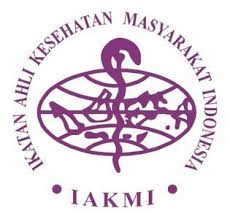Perilaku Pencegahan COVID-19 pada Ibu Rumah Tangga berdasarkan Protection Motivation Theory
Abstract
Abstrak
Kabupaten Cirebon berada pada nilai CFR (Case Fatality Rate) tertinggi di Jawa Barat yaitu 2,5%. Kasus terkonfirmasi mencapai 7.792 kasus, 4.432 kasus terjadi pada wanita usia produktif 20-54. adanya peningkatan kasus pada klaster keluarga ibu rumah tangga, Puskesmas Kamarang merupakan Puskesmas yang memiliki laju insidensi kasus 7,9%. Dimana 56% kasus terjadi pada ibu rumah tangga, dan 1 orang ibu rumah tangga meninggal dunia usia 37 tahun. Protection Motivation Theory menjelaskan bagaimana individu termotivasi untuk bereaksi dengan cara protektif terhadap ancaman yang dirasakan. Jenis penelitian ini yaitu penelitian kuantitatif dengan desain studi analitik observasional menggunakan pendekatan cross-sectional. Sampel pada penelitian ini yaitu ibu rumah tangga usia 20-54 tahun, pengambilan sampel menggunakan teknik purposive sampling dengan total sampel 290 orang. Instrumen penelitian berupa lembar kuesioner, analisis data yang dilakukan yaitu analisis univariat , bivariat, dengan menggunakan uji chi square, dan analisis multivariat dengan uji regresi. terdapat hubungan antara respon efikasi (p=0,002), efikasi diri (p=0,028), dan niat (p=0,000) dengan perilaku pencegahan COVID-19. sedangkan efikasi diri melalui variabel antara yaitu niat. Respon efikasi, efikasi diri, dan niat merupakan faktor-faktor yang berhubungan dengan perilaku pencegahan COVID-19 pada ibu rumah tangga di wilayah kerja Puskesmas Kamarang.
Abstract
Kabupaten Cirebon is in the CFR (Case Fatality Rate) value in Jawa Barat, namely 2,5%. Confirmed cases reached 7.792 cases, 4.432 cases occured in women of productive age 20-54 years. In early 2021 there was an increase in cases in the housewife family cluster, Puskesmas Kamarang that has a case incidence rate of 7,9%. Where 56% of cases occured in housewives, and 1 housewife died at the age 37 years. Protection Motivation Theory explains how individuals are motivated to react in a protective way to perceived threats.This type of research is quantitative research with anstudy design observational analytical using aapproach cross-sectional. The sample in this study were housewives aged 20-54 years, sampling using purposive sampling technique with a total sample of 290 people. The research instrument was in the form of a questionnaire sheet, the data analysis carried out was univariate , bivariate, using test chi square, and analysis multivariate with regression test. that there was a relationship between response efficacy (p=0.002), self-efficacy (p=0.028), and intention (p=0.000) with COVID-19 prevention behavior, while self-efficacy through an intervening variable, namely intention. Response efficacy, self-efficacy, and intention are factors related to COVID-19 prevention behavior in housewives in the working area of the Puskesmas Kamarang
Keywords: Housewife, Protection Motivation Theory, COVID-19 Prevention Behavior




